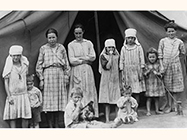Listen to the audio driving tour below, or download our app for your mobile device and hit the road! The Paint Creek Scenic Trail is a scenic byway that begins at Tamarack in Beckley, WV, and travels 44 miles to the town of Pratt, along the Kanawha River. It offers travelers a relaxing and scenic alternative to travel along the I-64/77 corridor. Visitors can learn about the natural, cultural, and historic heritage of this storied landscape as well as enjoy some of southern West Virginia’s best trout fishing, hiking, and biking.
Headwaters (Tamarack)
The Paint Creek Scenic Trails Association invites you on a journey down an old, old road. A road that will carry us back in time to learn about the early days of West Virginia, and teach us about the present too. About life along Paint Creek, a beautiful waterway stretching from its headwaters near Beckley to its mouth on the Kanawha River. On this tour you’ll hear about the history of Paint Creek from the voices of West Virginians who call it home.
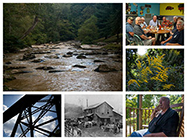
How Did Paint Creek Get Its Name? (Sweeneysburg)
To understand why Paint Creek came to be called Paint Creek, you have to start with an animal. We don’t pay much mind to today, but back in the day, the beaver was one of the most coveted resources for Native Americans. Doug Wood, a biologist and American Indian re-enactor, tells us the story.
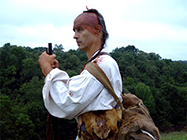
The Road that Howard Built (Pax)
Howard Hughes is one of the founders and leaders of the Paint Creek Scenic Trails Association. His great-great grandfather, a surveyor, founded the town of Pax, and his grandfather was an accomplished stone mason who built many beautiful stone structures still standing today in town. His father was a hard-working coal miner who helped fuel American industry during WWII. And Howard, well, Howard built something too.
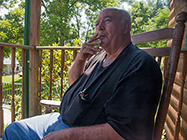
Follow the Creek (Laurel Grove)
Mary Draper Ingles was among the first white people to travel the Paint Creek…though not by choice. Here to tell the story is Dianne Anestis, a historical reenactor.
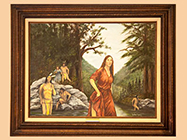
They Can’t Take the Memories (Kingston)
Paint Creek was once home to some of the busiest coal camps in the region. But if all you see today are trees, your eyes don’t deceive you. After most of the coal mines left this area starting in the 50s, towns were reduced to ruins in the woods. But these coal camps live on in the memories of those who gather at the Kingston Reunion, like Billie Dunlap.

Rebirth of Paint Creek (Westerly)
Today on Paint Creek, you’ll find people fishing, swimming, or even kayaking. But it wasn’t always that way. By the 1960s, years of coal mining throughout the area had taken their toll. Dwight Siemiacszko, a member of the Lower Paint Creek Watershed, tells the story of how grassroots watershed groups brought the creek back to life through hard work and many partnerships.
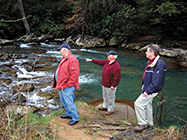
Rabbit Blood (Krebs)
According to historical records, a total of 50 men have been killed in mining disasters on Paint Creek since 1894. Many more have been killed and injured off the records. There’s no question that coal mining is a dangerous profession. But every day, thousands of miners across the country risk life and limb to mine coal. Dwight Siemiacszko is one of them, and he tells this story of his first day underground, which could have easily been his last.
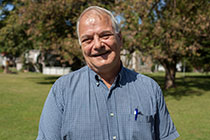
Whiskey the Hard Way (Whittaker)
Irving Clark and Emra Campbell are two old timers who have spent practically a century living along the banks of Paint Creek, and they came up the hard way. Miners in their day faced many hardships, including economic exploitation by coal companies. Irving’s father was a coal miner who made moonshine on the side, but it wasn’t a hobby. It was a way to survive.
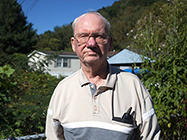
Solidarity Forever (Gallagher)
King Coal used to rule on Paint Creek. Companies built entire towns where they owned the houses, stores, and schools. Dependence on coal companies for nearly every need in life began to breed resentment among the miners. The unrest reached a boiling point in 1912 when miners on Paint Creek and nearby Cabin Creek went to strike on demand higher wages, fairer employment laws, and better living conditions. It was the first major battle what became known as the West Virginia Mine Wars. Walter Seacrist was a West Virginia balladeer who grew up in Holly Grove in a tent camp created by striking mining families who had been evicted from their company houses. His song, “Law in the West Virginia Hills,” was drawn from his personal experiences.
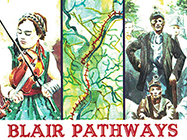
Women of the Mine Wars (Pratt)
The United Mine Workers of America knew that to organize West Virginia coal miners, they had to get a foothold on Paint Creek. Miners there were fed up with company control and called in the union, asking for Mother Jones by name. The Paint Creek-Cabin Creek Strike lasted over a year. It was long, bloody, and difficult. It was the beginning of the West Virginia Mine Wars. Karen Vuranch, a storyteller and actor, says that women in particular were integral to the union movement in West Virginia.
